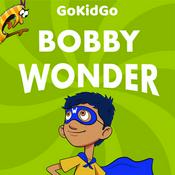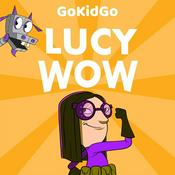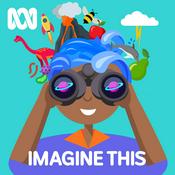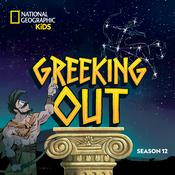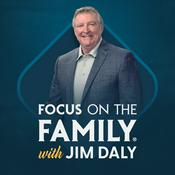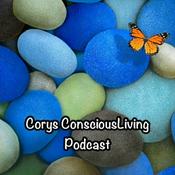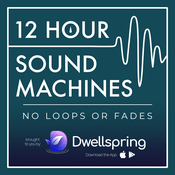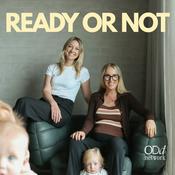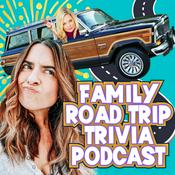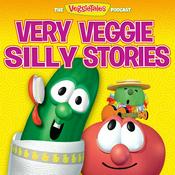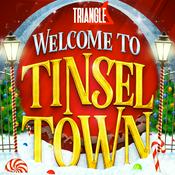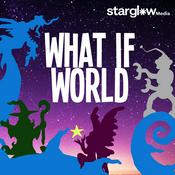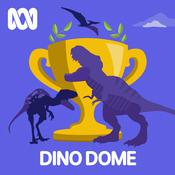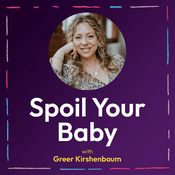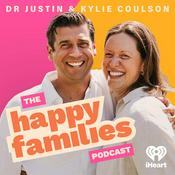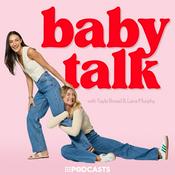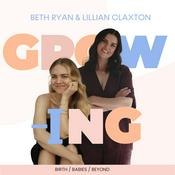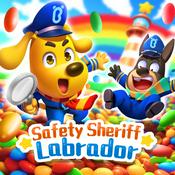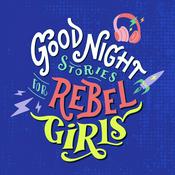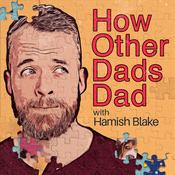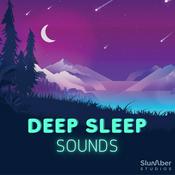168 episodes

E176: Who lives in the rainforest canopy? [SJK Audio Edition]
15/12/2025 | 8 mins.
Read this article at: https://www.sciencejournalforkids.org/articles/who-lives-in-the-rainforest-canopy/ or watch at: https://youtu.be/EkO0cYJbMOUSummary: Researchers developed a new eDNA collection system to look at biodiversity in tropical rainforests.Abstract: Can you list all the animals that live at the top of rainforest trees? You might have seen pictures of birds or monkeys living in the rainforest canopy. The tropical rainforest is very biodiverse. But researchers still don’t know about everything that lives there.We wanted to test a new way of finding out what lives in the rainforest canopy. We set up collectors that catch rainwater as it falls down from the trees. We studied environmental DNA from the water to look at biodiversity. We found that hundreds of different organisms live in the rainforest canopy. There is also more biodiversity in areas that are not disturbed by humans. So, the environmental DNA gathered in rainwash is very important. This method can help people learn more about the rainforest ecosystem and conserve its biodiversity.You are one of half a million educators in the U.S. who use our articles and videos in class. All our content is FREE, no paywalls, no need to subscribe. But recent federal cuts have made it hard for us to win grants to fund our mission. We are a small non-profit, and without support, we may not make it.If you enjoy our content, please consider donating - https://www.sciencejournalforkids.org/support-us.html This is a public episode. If you would like to discuss this with other subscribers or get access to bonus episodes, visit sciencejournalforkids.substack.com

E175: How do cuttlefish trick their prey? [SJK Audio Edition]
21/11/2025 | 9 mins.
Read this article at: or watch at: https://youtu.be/GBkNur1E_BwSummary: Researchers identified four different camouflage hunting displays in wild broadclub cuttlefish.Abstract: Predators and prey are in conflict with each other. Predators try to catch prey, while prey try to avoid predators. Predators can blend into their surroundings and wait for prey to get close. Or predators can chase their prey. Some predators will even sneak up on their prey before chasing it. Camouflage can help these predators be more successful.One predator that uses camouflage is the cuttlefish. But we don’t know much about how they hunt in the wild. So, we observed broadclub cuttlefish on coral reefs in the Indo-Pacific. We saw four different hunting displays. We also saw individual cuttlefish using multiple displays in different moments. This information can help us better understand predator behavior on coral reefs.You are one of half a million educators in the U.S. who use our articles and videos in class. All our content is FREE, no paywalls, no need to subscribe. But recent federal cuts have made it hard for us to win grants to fund our mission. We are a small non-profit, and without support, we may not make it.If you enjoy our content, please consider donating - https://www.sciencejournalforkids.org/support-us.html This is a public episode. If you would like to discuss this with other subscribers or get access to bonus episodes, visit sciencejournalforkids.substack.com

E174: How can growing seaweed help fight climate change? [SJK Audio Edition]
14/11/2025 | 10 mins.
Read this article at: https://www.sciencejournalforkids.org/articles/how-can-growing-seaweed-help-fight-climate-change/ or watch at: https://youtu.be/Av0AflIv6bYSummary: Researchers compared seaweed farming scenarios to see if seaweed farming could help reduce carbon emissions.Abstract: Why is seaweed important? If you ask a fish, they might say that seaweed helps them hide from predators. A sea lion might say that seaweed forests are great places to find fish to eat! And people all around the world like to eat seaweed.Recently, people have started to talk about seaweed farming as a way to help with the climate crisis. Why? Because farming seaweed doesn’t use very many resources. Growing it may even improve ocean health by providing habitat and food to sea creatures. Seaweed also absorbs carbon dioxide (CO2) as it grows, so it could even help with climate change by reducing the amount of CO2 in the atmosphere. But just because it could help doesn’t mean it will!We studied five different seaweed farming scenarios using a computer simulation. We found that growing and harvesting seaweed can help with climate change. The biggest impact would come from using seaweed products to replace common things that right now take a lot of carbon-intensive energy to make.You are one of half a million educators in the U.S. who use our articles and videos in class. All our content is FREE, no paywalls, no need to subscribe. But recent federal cuts have made it hard for us to win grants to fund our mission. We are a small non-profit, and without support, we may not make it.If you enjoy our content, please consider donating - https://www.sciencejournalforkids.org/support-us.html This is a public episode. If you would like to discuss this with other subscribers or get access to bonus episodes, visit sciencejournalforkids.substack.com

E173: Why are some sea snails moving north? [SJK Audio Edition]
22/10/2025 | 10 mins.
Read this article at: or watch at: https://youtu.be/JKoJhxkvFYQSummary: Scientists wanted to find out how sea snails were adapting to new habitats in colder waters.Abstract: If you lived in sunny California, would you want to move north? Well, some sea snails are doing exactly that! We were curious about Kellet’s whelks, a type of sea snail. They usually live in the warm waters of Southern California and Mexico. Now, we’re finding them further north in colder water! We collected Kellet’s whelks from the California coast – some from the south and some from the north. We kept them in separate tanks with identical conditions. Then we compared the DNA of their babies.The northern snails had 2,770 genes that were working differently. These differences were so clear that we could tell if a baby snail’s parents came from the south or north just by looking at its DNA. We also found that the northern snails’ genes show some changes that help them survive in the colder water up north! Our findings are helping scientists understand how ocean animals are adapting to a changing climate.You are one of half a million educators in the U.S. who use our articles and videos in class. All our content is FREE, no paywalls, no need to subscribe. But recent federal cuts have made it hard for us to win grants to fund our mission. We are a small non-profit, and without support, we may not make it.If you enjoy our content, please consider donating - https://www.sciencejournalforkids.org/support-us.html This is a public episode. If you would like to discuss this with other subscribers or get access to bonus episodes, visit sciencejournalforkids.substack.com

E172: What are good ways to track melting glaciers? [SJK Audio Edition]
29/9/2025 | 10 mins.
Read this article at: https://www.sciencejournalforkids.org/articles/what-are-good-ways-to-track-melting-glaciers/ or watch at: https://youtu.be/BUo2SaeYdKoSummary: Researchers combined datasets to more accurately measure changes in glacier melt around the world.Abstract: Have you ever watched an ice cube melt on a hot day? Well, that’s happening to glaciers all over the world. Glaciers have important impacts on water resources, runoff, and sea level rise. Keeping track of how glaciers change is important to predict and plan for these downstream impacts. We wanted to create a more recent record of how glaciers have changed from 2000 to 2023. So we compared and combined data about glaciers collected using different methods. We found that glaciers worldwide lost about 5% of their mass in this period. In different regions glaciers lost between 2% and 39% of their mass. We saw slight differences between data collection methods that could add up over time. We expect glacier loss to continue, which will lead to some regions losing their glaciers by 2100. It’s important to use the most accurate and up-to-date information to make predictions about glacier loss in the future. You are one of half a million educators in the U.S. who use our articles and videos in class. All our content is FREE, no paywalls, no need to subscribe. But recent federal cuts have made it hard for us to win grants to fund our mission. We are a small non-profit, and without support, we may not make it.If you enjoy our content, please consider donating - https://www.sciencejournalforkids.org/support-us.html This is a public episode. If you would like to discuss this with other subscribers or get access to bonus episodes, visit sciencejournalforkids.substack.com
More Kids & Family podcasts
Trending Kids & Family podcasts
About SJK Audio Edition
Listen to SJK Audio Edition, Beyond the Bump and many other podcasts from around the world with the radio.net app
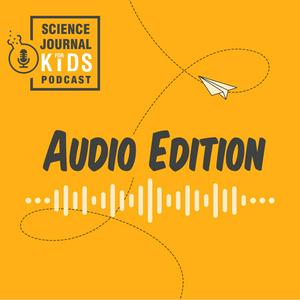
Get the free radio.net app
- Stations and podcasts to bookmark
- Stream via Wi-Fi or Bluetooth
- Supports Carplay & Android Auto
- Many other app features
Get the free radio.net app
- Stations and podcasts to bookmark
- Stream via Wi-Fi or Bluetooth
- Supports Carplay & Android Auto
- Many other app features


SJK Audio Edition
download the app,
start listening.


